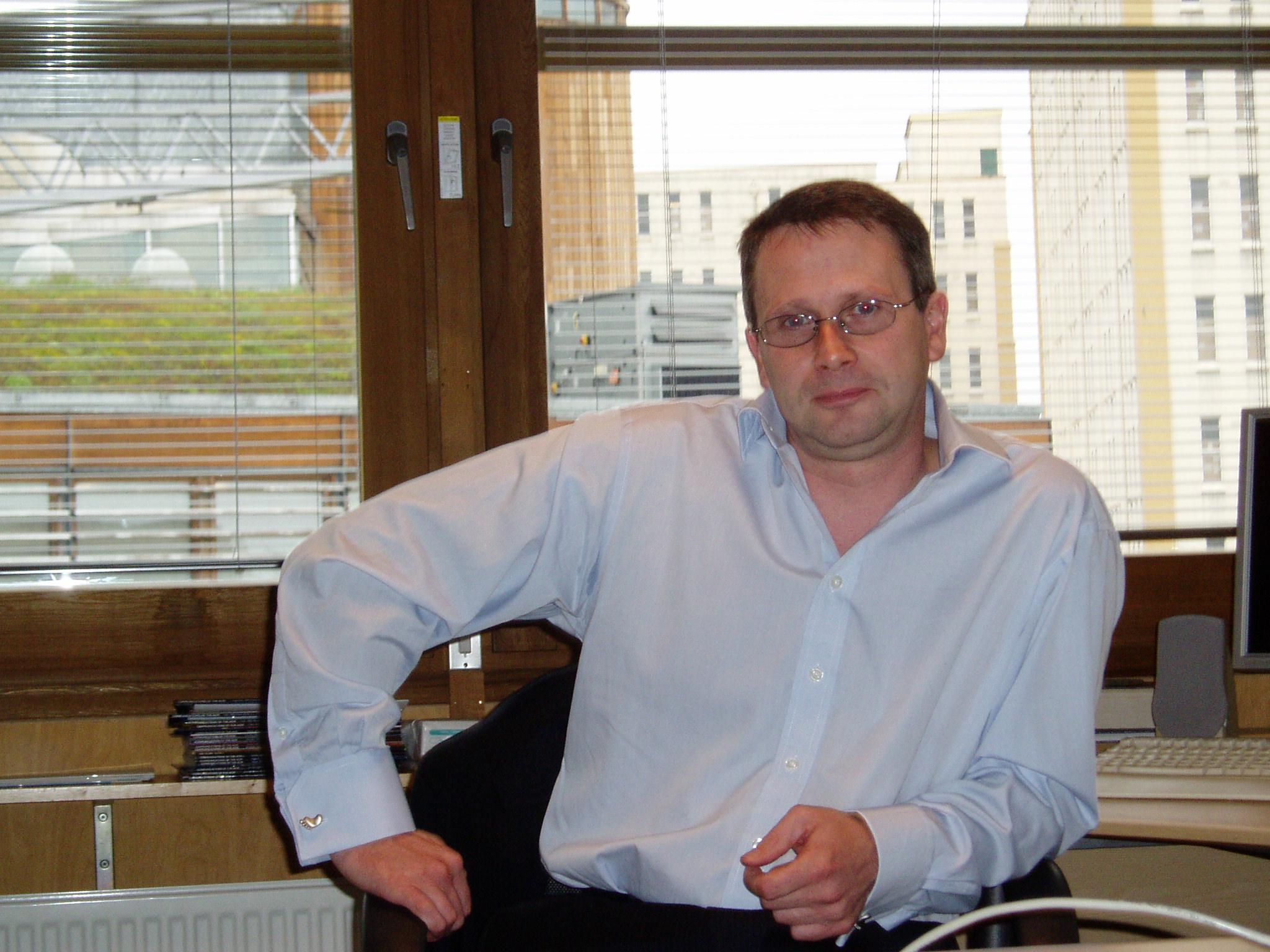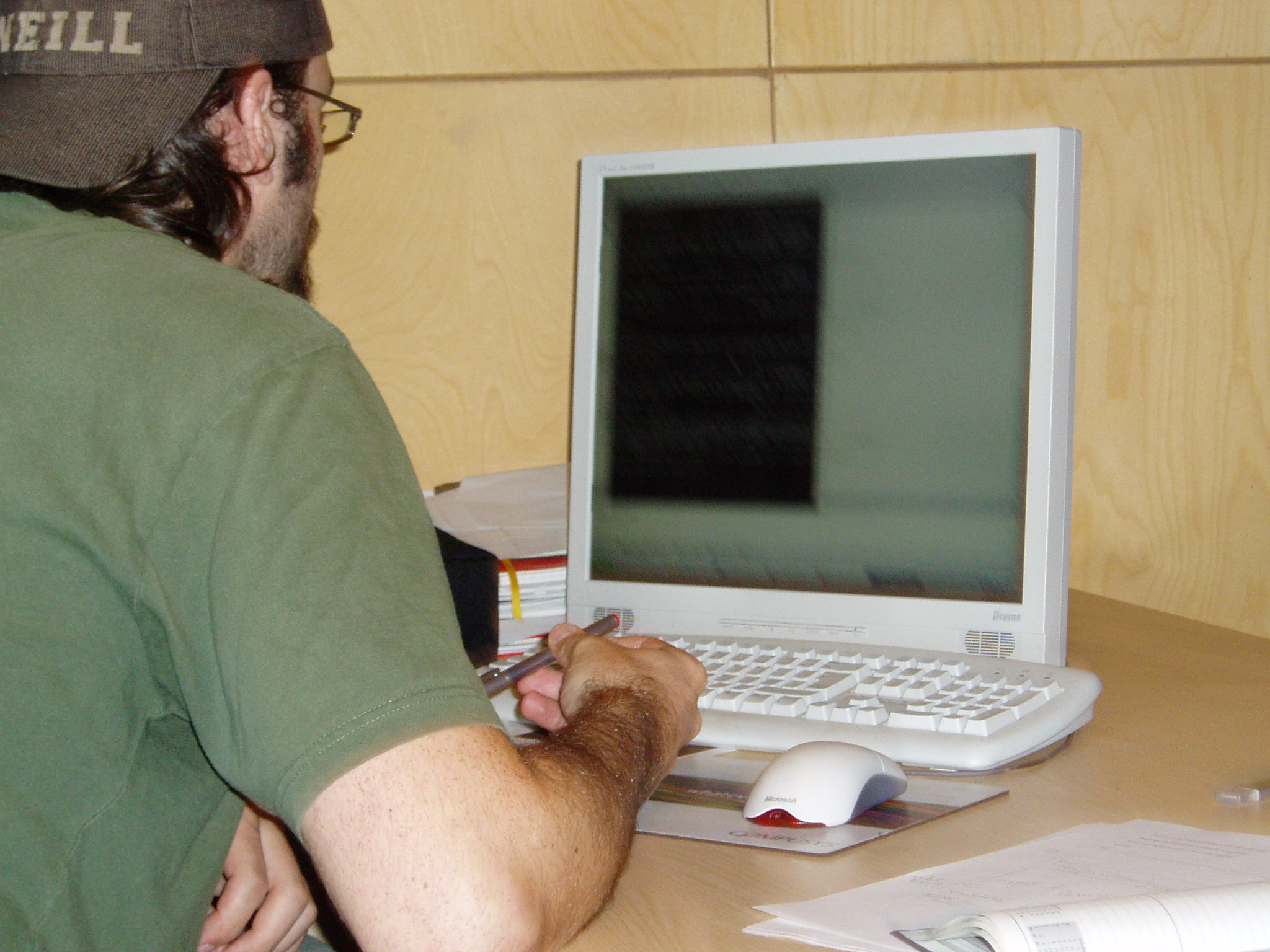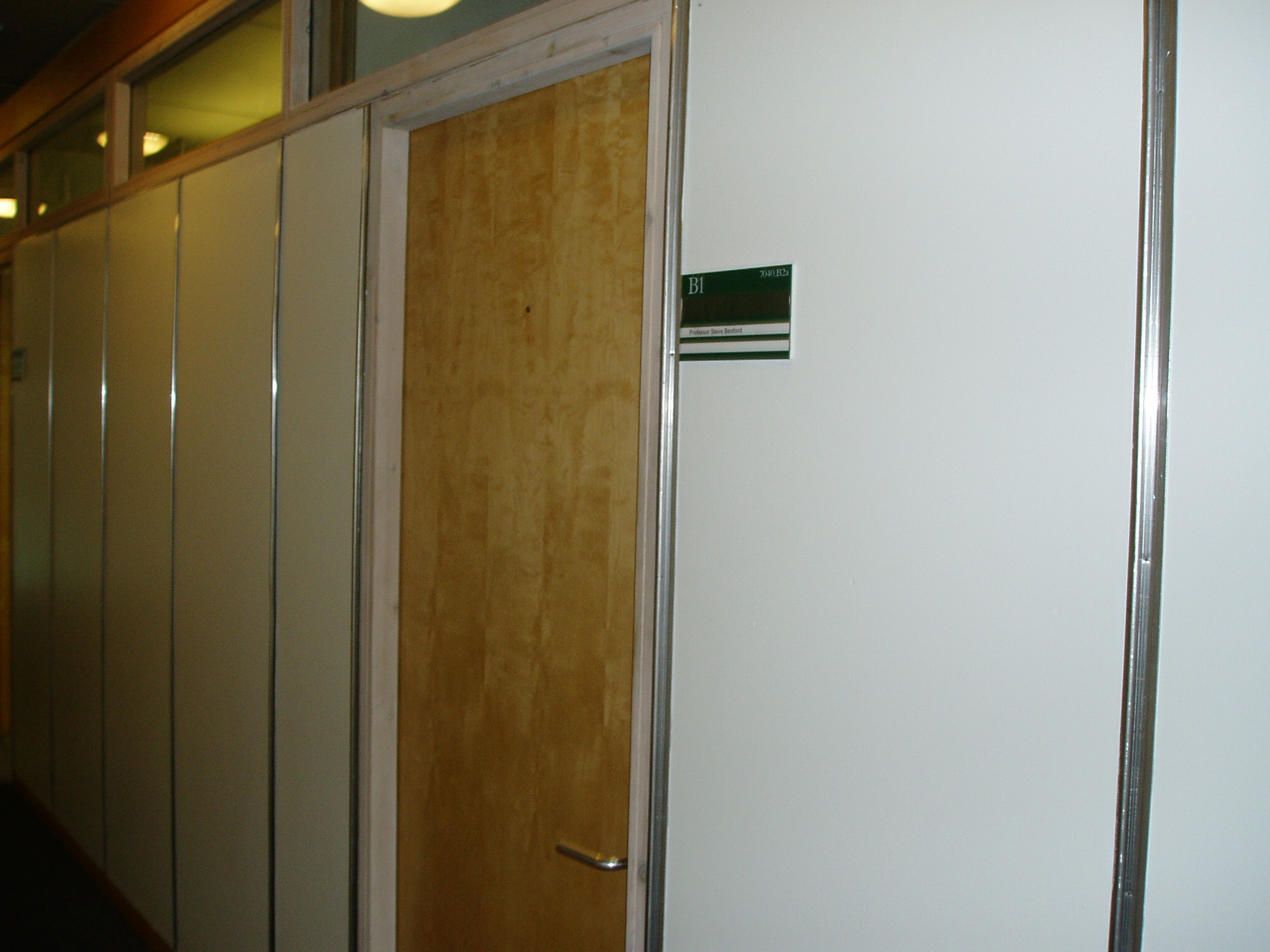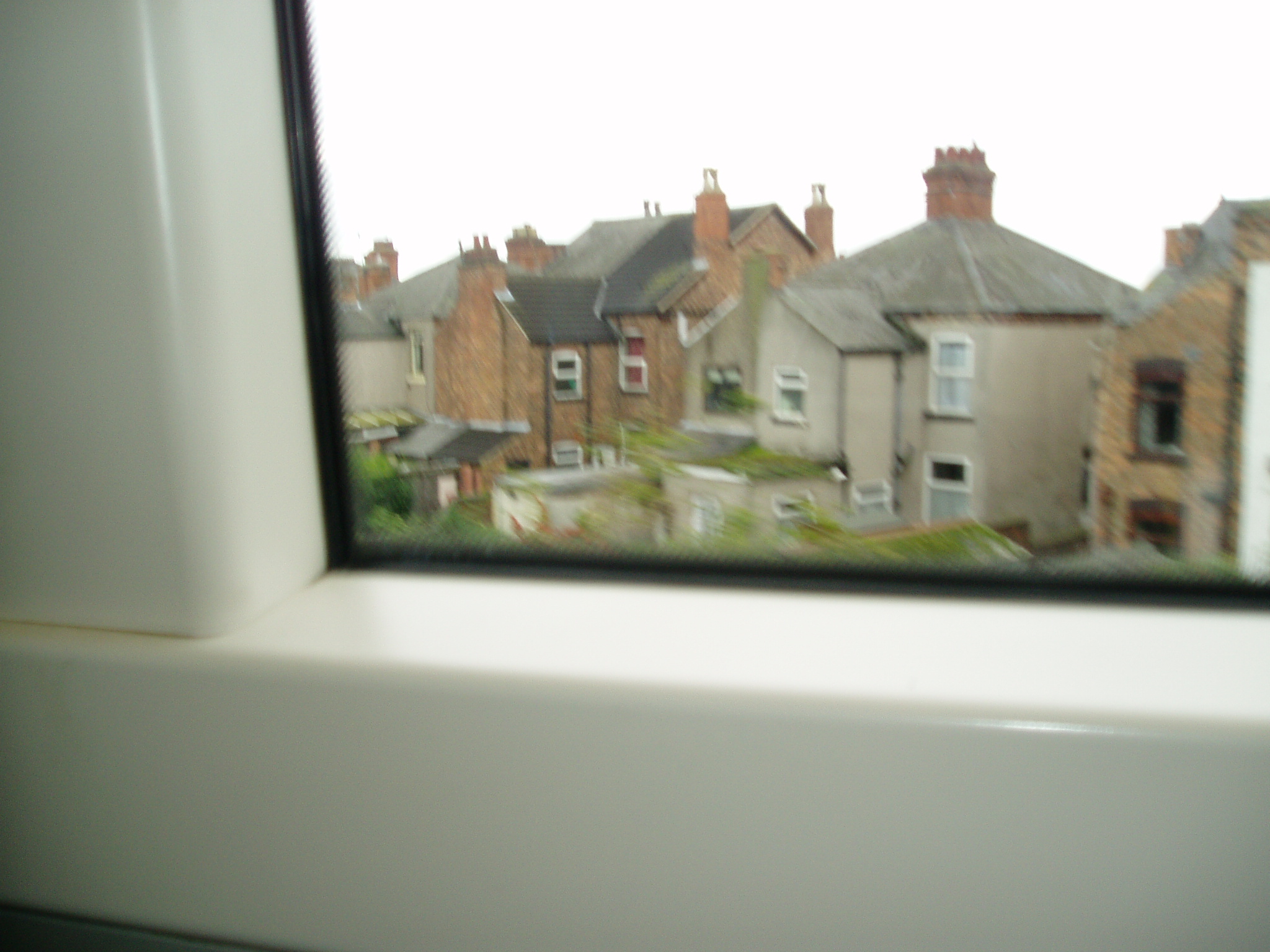Between Nottingham and Exeter, 5 October 2006
I have a set of meetings at Mixed Reality Lab today, a brief one with Steve Benford, and two longer ones with Andy French, to discuss what is possible at the level of software, and with Andy Crabtree, the experienced ethnographer who has been documenting all the Blast Theory Mixed Reality Lab works I have been writing about over the past few years. Andy French shows me some examples of e-science documentation and explains where he would like to go with it. He is very patient and clearly points out what is and isn’t interesting, and what is and isn’t possible. He also explains the difference between records, documents and data, and raises fascinating questions that make me think hard about what I wish to do for this project. Again, I realise, that despite my expertise in new media, I am profoundly ignorant about this kind of work. I suddenly appreciate how much this project, The Presence Project, would have benefited from these forms of documentation and how much more accurate, detailed and rich these types of documentations can be.

As I step into Andy Crabtree’s office, the game rings. I feel slightly irritated about it and lose my train of thoughts. I explain our vision of the bid to him. He responds by raising some fascinating questions about documentation that very much problematise the whole idea of what a document consists of. We talk about documents, metadocuments, records and data, postmodernism and ethnography and finally I show him this diary of my game of Day of the Figurines. We also wonder what we would be documenting in this kind of work, which, from any canonic point of view, is so dispersed, rhizomatic, and within which, to some extent, there is nothing to see. I am very grateful for this conversation for, as a result of it, I realise what I would like to explore in relation to this bid and Blast Theory's work. The challenge for me will be to translate this idea into something that has to do with data. This is a big challenge and one that will definitively force me into unknown grounds.

I have some time to spare, check my email and catch up with Michael Wright and Capra. Michael is, as always, very supportive of my writing in this diary. This helps tremendously (very big thank you Michael!!) since I don't really get much feedback from anyone else and sometimes wonder whether I should continue at all. Meanwhile, within the world of the game, I am at the Rec. ANNABELLE is still wondering about HASSAN’s wristband. I am run down. I pickup and use a cup of tea. I think this helps me. ANNABELLE suggests we go skating, but then never replies, so I don’t know what she wishes to do. HASSAN, who has a muscular chest and DESMOND who has webbed feet are also here but do not engage in dialogue. I decide to explore a new site and head for the YMCA. Today, so far, has been a quiet day within the game. I have not really met anyone. I have not really learnt anything. Things are quite different here at the Lab.

I have one last brief meeting with Steve Benford to finalise some strategies to do with the e-science call. As I wait for him, I remember that I said that I would talk about Peter Handke’s play Kaspar (1967). The piece, written almost forty years ago now, draws from the popular mythology around the case of Caspar Hauser, the man who appeared on a public square in Nüremberg in 1828 able to utter only one sentence: ‘I want to become a horseman like my father was once.’ (Benjamin, 1985: 118-24). There is something in the play that has to do with knowledge acquisition through language that I wish to explore in relation to this piece.
The play begins with Kaspar’s overtly theatrical entrance, through a stage curtain. He does not show any understanding of his own words since his sentences and often even physical movements are simply reactions to what he meets. While at first he tries to avoid the objects on stage, he then begins to explore them by touching them.
In the next phase of the play Kaspar learns the relationship between parts and the whole. He learns to use pauses which for him mark the distinction between thought and speech. As he pauses, he becomes self-aware. Thus, for the first time he interrupts his own sentence and sits quietly, while a group of ‘prompters’, who speak to him through a medium, tell him: ‘you learn with the sentence that there is an order and you learn with the sentence to learn order.’ (ibid.: 23). According to the prompters, language is an instrument for familiarization with the world, or self-orientation within the world. Experience is seen here as the product of language.
Subsequently, Kaspar feels the need to create order on the stage, which only now begins to look inhabitable. Here he discovers the direct relationship between his actions and the sentences describing them. The end of this phase coincides with Kaspar’s recognition of himself and his utterances as coming from his own mind. Kaspar has now discovered that he can impose order over what appears to be disorderly, and that objects can be what he designates them to be. But, becoming aware of his own power, he also becomes aware of the possibility of a discrepancy between objects and words: ‘if you see the object differently from the way you speak of it, you must be mistaken’ (1986: 58-9). This new phase, pointing to his understanding of himself as a subject and an object, is characterized by the arrival on stage of a number of other identical Kaspars, a moment which marks his entrance in the social world. Recalling his story again, he points out that ‘already with my first sentence I was trapped’ (1986: 96).
I see parallels between this work and Day of the Figurines. In both cases, we start with something theatrical and performative that dislocates us into a new microcosmic world. In both cases this new world then pervasively (more so in Day of the Figurines, of course, but then the works are 40 years apart) reclaims their position outside representation, in the real. Whereas Handke's play was about Kaspar's experience of a phenomenic world through language, this work, once within the game, only takes place at the level of language - i.e., there is nothing here but language and what language does for us. In both cases, Kaspar and the players can only acquire knowledge through language and through this they learn about time, structure, self-orientation, self-awareness, objects, awareness of one's role within the structure, the possibility of error, the discrepancy between objects and words, social interaction.

As I travel back to Exeter, I reach the YMCA. The shutter is drawn. I am again in the wrong place at the wrong time. I decide to head back to Kath’s Café for some company. LUCAS and KERSTIN are here but do not engage in conversation. I decide to go back to the REC. I am told no one is near me and get no game information. There must be a problem because my phone stops ringing at 4.30 and I receive no updates. The game has shut me out. In a strange way, I kind of miss it.
To follow my game tomorrow go to Day of the Figurines 6/10/2006








